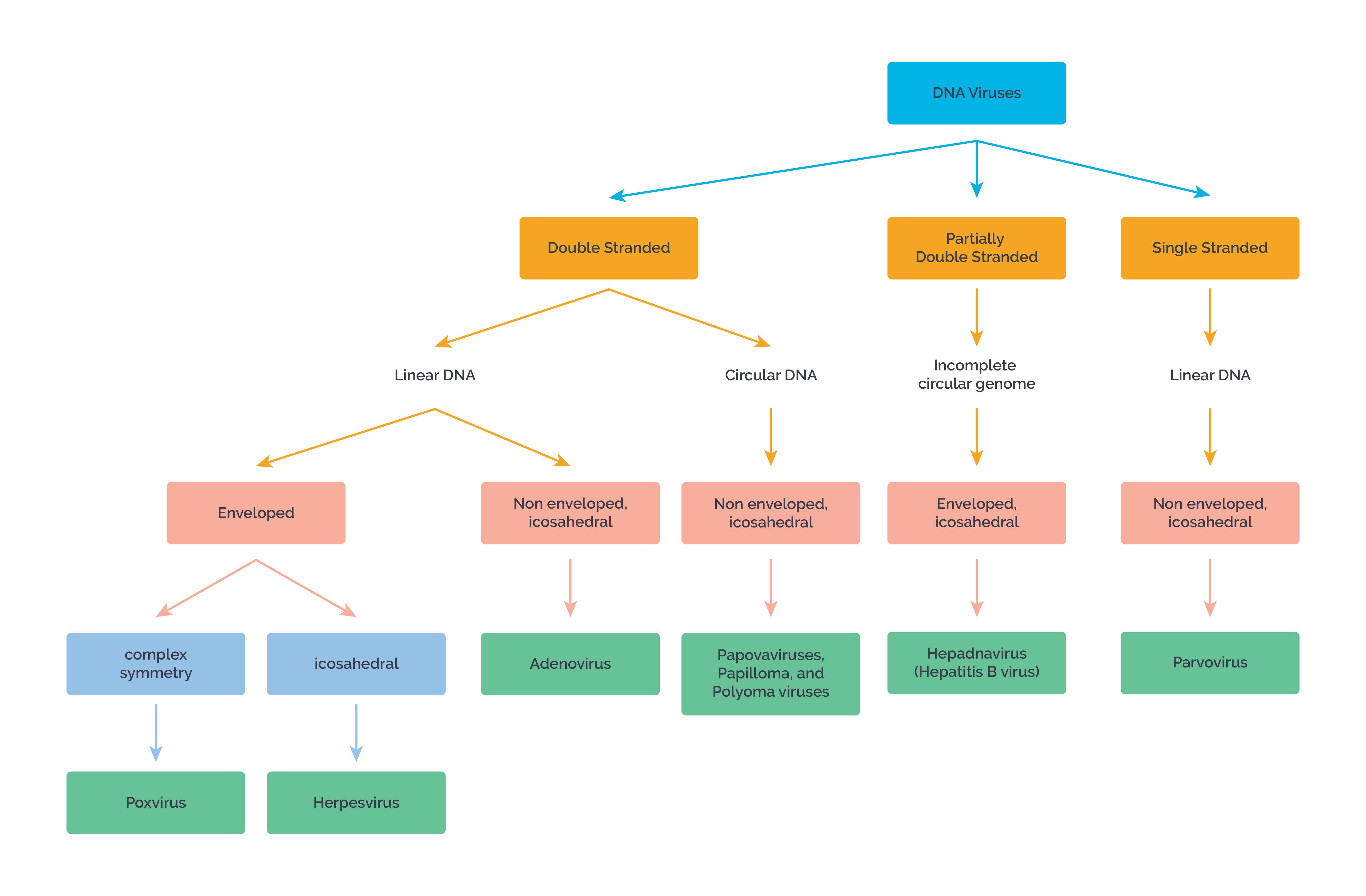It is important to know the classification of viruses and important pathology caused. That is true for all viruses except Hepatitis viruses, Influenza virus and HIV where you have to learn details about the pathogenicity, transmission and a few other factors.
General Virology: Viruses are the smallest obligate intracellular pathogens infecting humans. Virion is the entire infectious unit made up of the viral genome which is either DNA or RNA, surrounded by a protein covering called a capsid which may be surrounded by a lipid envelope. The genome along with the capsid constitutes the nucleocapsid.
Envelope glycoproteins are important in attachment to the host surface. Ether, alcohols, phenols and certain disinfectants can dissolve the lipid envelope causing the enveloped viruses to lose their infectivity. Capsid is formed of units called capsomeres which can be arranged in icosahedral (a complex polygon), helical (like a helix) or complex (neither of the two) symmetry.
Viruses are classified on the basis of their genome which may be single or double stranded, DNA or RNA, segmented or unsegmented, circular or linear with varying morphologies of the capsid. This knowledge is important to figure out which virus is causing particular clinical features as USMLE vignettes will almost always describe the morphology of the virus.
Viruses can be classified as below:

